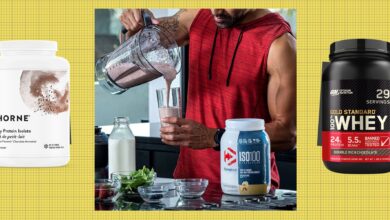How People With Hidradenitis Suppurativa Cope When It’s Miserably Hot Out

Because her HS affects her arms, Bennett often skips the tank tops in favor of more coverage. But there are also times when she wants to wear the cute sleeveless dress, or just feel a bit cooler: As a yoga teacher and practitioner, sometimes she tosses the T-shirt aside to practice in her sports bra—though not without some anxiety.
“I’ll lift my arms up in a high prayer, and think, yep, my HS is fully exposed, and people might think it’s weird,” Bennett says. “But then I tell myself, this is my body. Just be in your body.” As Bennett sees it, one of the best things you can do for yourself is to avoid getting caught up in other people’s judgments—real or imagined. But she also knows that’s easier said than done.
“I’m still working on it myself,” Bennett says. When she does find herself stuck in negative self-talk mode, her yoga breathing practices help. So does journaling—to remind herself that whatever has her down in the moment will pass.
Another confidence booster, Bennett says, is being well-prepared for any given day, especially in the summer. For her, that might mean putting chafing powder between her legs before she heads out, or packing certain essentials, like skin wipes and a beeswax salve that she’s found helpful for easing skin irritation from too much sun.
“My thinking is, wear what you want, and make sure you have everything you need that day to be comfortable and be your best self,” Bennett says.
Air conditioning is a must-have some of the time
Maggie McGill has known from the beginning that heat can worsen their HS. Even before being diagnosed, they noticed their first skin symptoms at age 19 after spending long days outdoors working at a summer camp. “I was like, what is happening to my body?” McGill remembers. Now, at age 30, they have various ways of treating their HS, but also know that a flare-up during summer is “inevitable.”
Luckily, McGill has come up with some hacks to help minimize the impact of hot weather. The “biggest,” they say, is to wear tight slip shorts or bike shorts as undergarments, which provide a buffer between their inner thighs, reducing both sweat and skin friction. Like Marco, McGill stresses that breathable, moisture-wicking fabrics—“anything that keeps in mind that a vagina needs to breathe”—are a must.
McGill also has a “rule” when it comes to outdoor temperature: If it goes above 85 degrees, air conditioning is mandatory. Living in Philadelphia, they often do a lot of walking—but on days when the city is particularly oven-like, they treat themselves to an Uber.
On the broader subject of clothing, McGill has done a lot of “self-reflection”—both as someone with HS and a person with a larger body. “It’s not just the HS scars that might be conceived as unattractive,” they point out. What it comes down to, in McGill’s eyes, is choosing what you need to feel good, like wearing a tank top or a bikini, regardless of your HS scars or body size.
Try a dip in the pool
Heat and humidity may be challenging for anyone, but it’s especially tough when you’re in the more advanced HS stages, says Jackie Stevens, a 44-year-old who’s had the skin condition since she was 13. For her, summer is, frankly, “a nightmare.”


